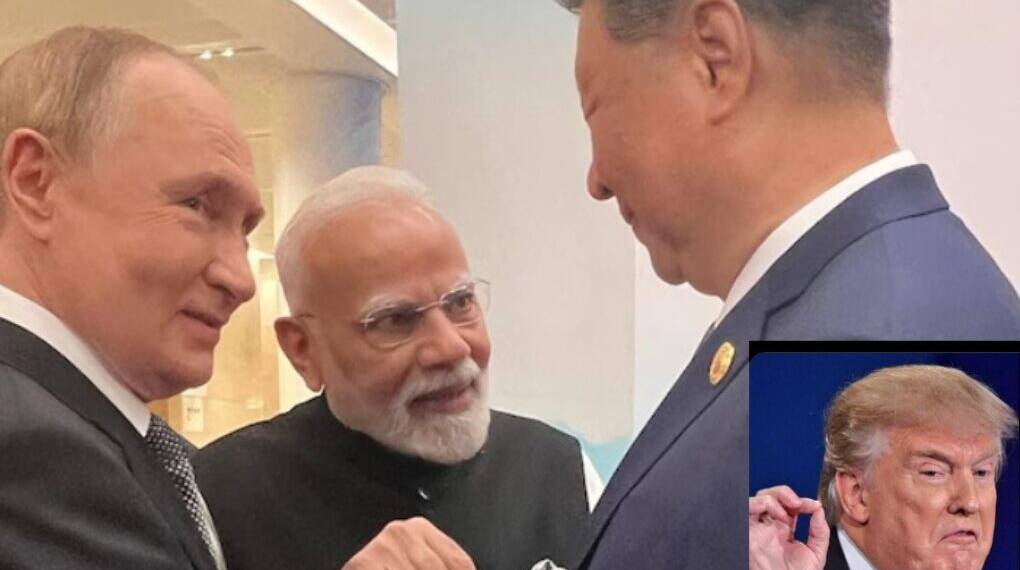In his second term, U.S. President Donald Trump has reignited the flames of a global trade war. Guided by his uncompromising “America First” doctrine, Trump has directly targeted BRICS nations—Brazil, Russia, India, China, and South Africa.
But unlike in the past, these countries are refusing to bend. Instead, they are responding with defiance, uniting, and reshaping the contours of the global order. What is unfolding is not just another trade dispute but a deeper clash: multipolarity versus American dominance.
China: Tariffs, Rare Earths, and a Fragile Truce
The first major confrontation came with China. In early 2025, Trump imposed tariffs as high as 145% on Chinese imports. Officially, these were linked to trade imbalances and Beijing’s role in the synthetic opioid crisis. But the underlying motive was unmistakable — weakening China’s economic engine.
The move quickly backfired. China remains America’s biggest supplier, exporting everything from consumer goods to rare earth magnets that power electric vehicles, microchips, and AI technologies. In retaliation, Beijing restricted exports of seven key rare earth elements, paralyzing U.S. supply chains. Manufacturing slowed, Wall Street wavered, and businesses pressured Washington for relief.
The standoff led to a fragile truce: Trump froze tariffs at 30%, China maintained counter-tariffs at 10%, and both sides agreed to extend negotiations for 90 days. Rare earth exports resumed, but the reality was stark — the U.S. could not force China to bow.
Complicating matters further, China continues importing Russian oil at record levels, an area where Washington lacks the leverage to impose meaningful restrictions without hurting its own allies.
Brazil and South Africa: Defiance, Not Submission
Trump then turned his sights to Brazil. In August 2025, he imposed 50% tariffs on Brazilian goods, tying them to political concessions, including ending prosecutions against former President Jair Bolsonaro.
President Luiz Inácio Lula da Silva flatly rejected the demands, calling the tariffs “blackmail.” Rather than yield, Lula doubled down on BRICS cooperation, choosing alignment with China, Russia, and India over submission to Washington.
Days later, Trump raised tariffs on South African imports to 35%. Pretoria warned of job losses and economic damage but resisted giving in. Instead, South Africa leaned more heavily on BRICS trade frameworks for support. Ironically, Trump’s tariffs, instead of isolating nations, have begun to strengthen the cohesion of the BRICS bloc.
India: The Bridge That Would Not Break
Perhaps the most consequential gamble has been Trump’s approach to India — a democratic partner often described as the bridge between East and West. In August, Trump doubled tariffs on Indian goods to 50%, punishing New Delhi for buying discounted Russian oil, which reached nearly 1.8 million barrels per day. The cost? An estimated $50 billion hit to Indian exports.
The rhetoric escalated. Trump’s advisors branded the Ukraine conflict “Modi’s war,” pressuring India to abandon BRICS, stop purchasing Russian oil, and support the dollar. Trump even courted Pakistan with energy and defense deals in an effort to counterbalance New Delhi.
India’s response was firm. Prime Minister Narendra Modi declared that no one can dictate India’s foreign policy and reaffirmed the country’s commitment to “strategic autonomy.” India would act in its own national interest, not at Washington’s command.
The silence that preceded Modi’s statement was equally powerful. India would not bow.
BRICS Unity and U.S. Backlash
Amid U.S. pressure, BRICS nations are responding with unity. On September 8, a virtual summit led by Lula will bring together leaders to craft a common strategy. Now expanded to 10 members representing nearly 40% of global GDP, BRICS is accelerating local-currency trade and expanding the New Development Bank. What was once seen as a loose grouping is fast becoming an alternative center of global power.
Meanwhile, Trump faces mounting criticism at home. American farmers demand bailouts after retaliatory tariffs crush exports, while manufacturers insist, they cannot abruptly cut ties with China. Even conservative lawmakers, such as Congressman Ronny Jackson, have blasted the India tariffs as “reckless,” urging Trump to repair ties. Publicly, Trump has softened his tone, praised Modi and called India a “great partner.” But the damage, many argue, has already been done.
A Shifting World Order
The lessons are clear. Trump’s tariff war has not fractured BRICS — it has strengthened it. Instead of isolating China, Brazil, or India, Washington’s heavy-handed tactics are pushing them closer together. As Prime Minister Modi emphasized, India-U.S. relations remain a “strategic partnership,” but that does not mean abandoning BRICS or Russia.
The bigger story is this: BRICS is no longer a symbolic platform. It is a reality, a force that is challenging the unipolar world order. In the battle of Trump versus BRICS, one conclusion is inescapable — multipolarity has arrived, and it is here to stay.








